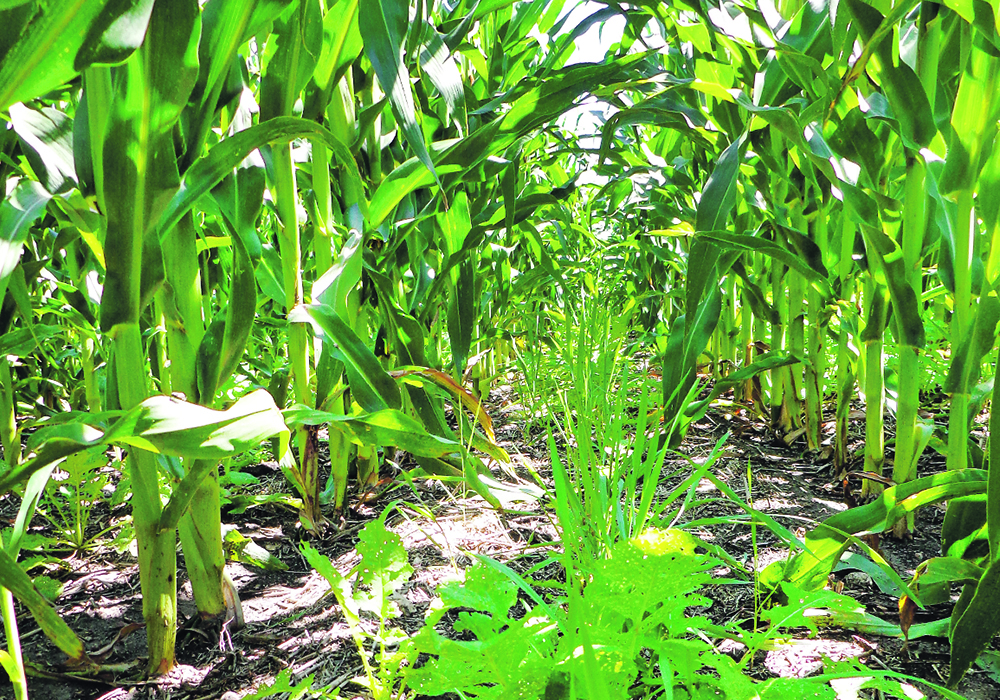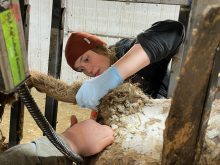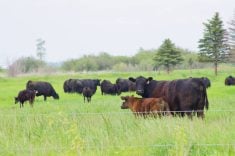Polycrops have become a more commonplace method of feeding beef cattle in Western Canada over the past number of years.
They may also be known as intercrops, cover crops or cocktail crops but all involve a mixture of plant species that may range from three to more than 20 species.
Polycrops can provide grazing when other forages aren’t available and are often used in fall or early winter grazing systems. They are often touted as a means of improving soil health.
Read Also

Feds propose overhaul of chronic wasting disease control program
Chronic Wasting disease control program getting updated by Canadian Food Inspection Agency with feedback encouraged from producers.
In many cases, these polycrop mixtures may contain some brassica forage species, which are often included as a late fall grazing strategy and may include turnip, rape, radish or kale. Many of them are well-adapted to the cool northern climates of Western Canada.
These brassica species are often very palatable to cattle and a good source of quality protein for grazing. However, they do come with significant health concerns in cattle, and care should be taken when grazing forages that contain a significant brassica content.
Many brassica species are highly digestible and contain fairly high levels of crude protein as well as rapidly digestible carbohydrates. However, they can be low in fibre. There is a risk of bloat or rumen acidosis if cattle are turned out on a polycrop with a high proportion of rapidly growing brassicas.
It’s advisable to inter-seed cereal grains in the polycrop to increase the forage’s fibre content.
The risk of acute bovine pulmonary emphysema is a concern whenever we move cattle from a relatively dry high roughage diet to a highly digestible forage source like a polycrop. This severe pneumonia condition is associated with the high levels of tryptophan that can be seen in turnip tops.
Tryptophan gets converted in the rumen to 3-methyl-indole, which damages the fragile air sacs in the lung, causing a severe pneumonic condition that is very difficult to treat.
Brassica species often have a high sulphur content. High levels of dietary sulphur can create excess hydrogen sulfide gas in the rumen, which can lead to sulphur-induced polioencephalomalacia. Symptoms would include neurological signs such as circling, blindness, inco-ordination and recumbency. In some cases, animals can seizure and die suddenly.
This condition is commonly associated with high sulphate water sources, but dietary sulphur can also contribute to this.
Feed testing your polycrop and determining the sulphur concentration along with water testing will help prevent this problem. Producers may also need to adjust their mineral program to account for the fact that sulphur will also tie up copper in the diet, making it less available.
Brassica species can also accumulate high concentrations of nitrates. The risk of this increases during periods of stress on the plants, such as drought conditions.
This nitrate cycle can be overwhelmed when nitrate levels are excessively high in the forage and rumen bacteria don’t have time to adapt. The bacteria can’t convert all the nitrites to ammonia, and the nitrites start to accumulate in the blood.
Some of the nitrates that can’t be converted by the bacteria also get recycled through the blood stream and into the saliva, which can eventually increase the levels of nitrates and toxic nitrites even further.
Nitrates are toxic because of their ability to bind with hemoglobin in the blood. It is the molecule that allows red blood cells to carry oxygen to the tissues.
Nitrites convert hemoglobin molecules to methemoglobin, which can’t carry oxygen. As a result, these high levels of nitrites can eventually create oxygen starvation for an animal’s tissues.
Clinical signs in affected animals can range from sudden death to signs of oxygen starvation, such as respiratory distress, an increased heart rate, weakness, muscle tremors, difficulty walking or an inability to get up once down.
Mucous membranes, which are tissues that are usually pink, such as the inside of the mouth, under the eyelids or the vulvar area of cows, will be blue-grey because of a lack of oxygen.
Several other potential health concerns have been identified, but I think most of these are rarer.
Brassicas contain other compounds, such as glucosinolates, that can potentially cause an iodine deficiency and goiter.
Photosensitivity has been associated with liver damage that can occur when cattle are grazing brassicas. The specific components that are responsible for this liver damage are not known, but the condition was recently described in a Nebraskan cow-calf herd grazing brassica forages.
There is also a specific blood disorder known as hemolytic anemia caused by a specific amino acid that can accumulate in some brassica species. Cattle affected with this anemia will become weaker and may have dark brown or red urine and yellow mucous membranes.
Brassicas are a high-yielding quality forage and most of these conditions can be managed by testing sulphur levels in feed and feeding a high-quality mineral supplement.
It is important to adapt animals to polycrops slowly and avoid turning out hungry animals to these pastures.
Ensuring that the polycrop’s brassica component is less than 50 per cent of the total diet will also make it less likely to cause health issues.
As always, consult your livestock nutritionist and veterinarian when making these types of major nutritional changes to a feeding program.
John Campbell is a professor in the department of Large Animal Clinical Sciences at the University of Saskatchewan’s Western College of Veterinary Medicine.















